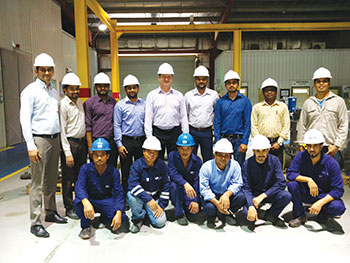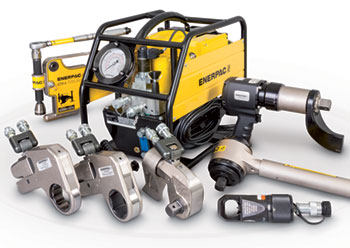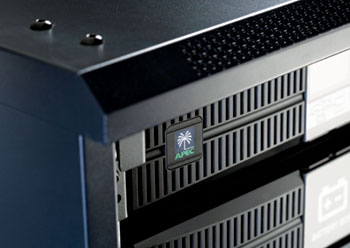
 Saudi Aramco is undertaking a 3-D seismic data operation in the Red Sea
Saudi Aramco is undertaking a 3-D seismic data operation in the Red Sea
Through its Geophysical Data Acquisition Division, Saudi Aramco has undertaken an unprecedented geological task on the kingdom’s West Coast by taking on the challenge of mapping the seabed of the Red Sea
In Saudi Arabia’s West Coast is a waterway that dates back millenniums, a channel of sea that formed after violent tectonic shifts in the Earth. Below its surface are underwater canyons, valleys and pinnacles – scars of its dramatic beginnings. Swimming and dwelling among this fabulous topography are some of the sea world’s most miraculous marine life.
But if one thinks the wonders of the Red Sea end there – think again. It’s in these historic waters that Saudi Aramco, through its Geophysical Data Acquisition Division (GDAD), is undertaking a breathtaking, globally unrivalled 3-D seismic data operation.
The ancient waters of the Red Sea are spurring an impending legacy that scientists and geophysicists believe will last for generations to come. This is a story of unparalleled geological history, modern technology, and a vision.
But the first stage of turning that vision into reality is understanding the complex geology under the Red Sea. Only then can its treasures be explored and exploited.
MAPPING THE SEABED
The task of mapping the seabed was colossal. Almost a decade ago, Saudi Aramco made the decision to conduct the world’s largest single hydrographic survey in the Saudi Red Sea waters – an area of almost 200,000 square kilometres (km2).
Prior 2-D seismic data acquisition had revealed positive signs for the presence of hydrocarbons in geological traps. The 2-D mapping had only been conducted along straight lines of varying lengths between 20 km to 40 km, at 5 km apart.
Just like the Eastern Province in the early 1940s, the Red Sea was frontier territory – unexplored. Its development would be a catalyst to spur growth and industry in the Western Region. A large-scale hydrographic survey – never before done in these historic waters – was required to fully understand the seafloor conditions.
The hydrographic survey with its close grid analysis would help support all oil field operations, including rig movements, laying of pipelines, oil field facilities, and the routes for supply vessels, just to name a few.
It was a must. "We got a good understanding, but lacked the topography of the seabed," notes Saleh A. Al-Maghlouth, manager of the Exploration Operations Department. "So we undertook this groundbreaking hydrographic survey to help us better understand the structures and where to drill."
THE CHALLENGES WERE MANY
"The major concerns were the time constraints and vessel safety," observed Richard G. Moffitt, Exploration Survey Unit consultant. "These were hazardous, shallow areas previously uncharted. In fact, there were old navigation charts in existence, but from several decades ago and at low resolution insufficient for present-day vessel navigation for exploration projects.
Historically, there were many more shipwrecks in the Red Sea than there were navigation charts." Conventional technology at the time utilised echo sounding as a means to map underwater topography, but this would have taken many years to complete.
So instead, Saudi Aramco did what it always does: put at its disposal the latest technology available to get the job done. What followed were 848 days of survey operations using a combination of hydrographic vessels and aircraft.
Five specially equipped ships would spend a combined total of 2,823 vessel days using a multi-beam echo sounder to collect data for water depths between 5 metres (m) and 2,400 m. This technology was supported by three aircraft using Airborne LiDAR Bathymetry systems for water depths between 0 m and 40 m, with a combined total of 1,260 survey flights completed.
"This technology promised to speed up our work by a factor of between 10 and 20 times faster than vessel operations alone. What was simply not possible prior to the advent of this technology became possible, and we were entrusted to make it happen," notes Moffitt.
The results were a new high resolution merged bathymetry grid allowing the mapping of complex geological features, including volcanoes on the seabed. The data was encouraging for Saudi Aramco. The company was now able to move offshore rigs around and initial exploration could begin.
But technology never stands still. Another breakthrough was around the corner. Previous 2-D seismic data had been compromised in certain sections due to the unpredictable seabed topography of the Red Sea.
Diffractions, trapped waves in the underwater valleys, and the poor signal-to-noise ratio at geological targets beneath the salt formations seemed unsurpassable. If plausible, a 3-D seismic survey would deliver more definitive and detailed data, and combined with the hydrographic survey, it would yield immensely useful information for geologists and geophysicists to map geological structures and deliver a high degree of certainty.
3-D seismic operations use acoustic waves generated by marine air guns to collect data. This allows for a more detailed seismic image of geological horizons, leading to more accurate drilling of potential wells. At the time, 3-D seismic surveys had proven prohibitively expensive and almost impossible to conduct in the Red Sea, but Saudi Aramco’s willingness to think outside the box was to soon deliver unexpected results. Where there’s a will, there’s a way.
TECHNOLOGICAL BREAKTHROUGH
Just how does one image in a 3-D sense a geology as complicated as that found in the Red Sea? It was a puzzling question for geologists. Within a short distance, depths can vary from a just a few metres to a few hundred metres.
In addition, the area is salt dominated, with shallow carbonate on the seabed, and deep targets below salt layers of variable thickness –making any seismic operation challenging and leaving behind degrading effects on the results.
Offshore seismic solutions existed in the industry, but none seemed capable of dealing with the unique features and complexity of the Red Sea. Some new technologies were being touted as possible solutions, but they were untested.
Saudi Aramco needed to take a chance. 3-D seismic would offer crucial data that would be invaluable for exploration. "The hydrographic survey and acquiring the bathymetry were crucial in the seismic survey concept," notes Turki M. Al-Ghamdi, chief geophysicist at GDAD. "This helped us identify the best location and we could move forward at speed. So we had everything in place – we just needed the right solution and technology."
The decision was made to pilot four potential technologies that could change the face of global seismic operations. "We required a novel approach – something never used before," says Azizur R. Khan, geophysical consultant with GDAD.
"We found four potential technologies, but we would have to test them. They had never been tried in an arena like the Red Sea, so we did our research and with management support we put them to the test."
After rigorous testing and analysis lasting almost a year, all the technologies delivered promised results — but one stood out for its efficiency and data quality: the Marine Autonomous Seismic System (MASS).
The technology was cutting-edge and the data from the pilot tests convinced GDAD, and the green light was given. A solution had been found. Utilising a node-on-a-rope based system, MASS uses reinforced armored rope with a 20-ton breaking strength to place nodes on the seabed. In addition, its robotised mechanism for deployment and retrieval would add efficiency to the operation.
The MASS nodes can operate in both shallow and deep waters ranging from 1 m up to 3,000 m, utilising one hydrophone and three omnidirectional geophones to optimise the data capturing range.
Incredibly, the nodes are able to stay on the seabed for up to 65 days thanks to advanced battery life technology. In addition, high-fidelity seismic signals provide excellent imaging beneath salt formations. The nodes are also one of the lightest in the industry, weighing only 7 kilograms each. The company’s calculated risk had paid off.
"We took it upon ourselves to test out-of-the-box tech took the risk of trying new technologies, we actually drove the industry to develop such technologies." So successful was the technology that it eventually cut costs of the acquisition by 40 per cent. Efficiency and technology go hand-in-hand. All was in place. 3-D seismic operations were now viable in the Red Sea. For Saudi Aramco, it was all systems go.
IN FULL SWING
The day starts early for Tariq H. Driwish. At 5 a.m., the geophysicist heads to his office; it takes him less than 30 seconds to get there. That’s because for Driwish, his office and home are almost one and the same, separated only by a room. He is crew supervisor for 3-D Seismic Survey Crew S-78.
Based out of Duba, the crew is tasked with carrying out seismic surveys in the nearby Red Sea. This is base camp for the operation, and with 346 staff, Driwish is responsible for ensuring all runs smoothly.
 |
ARMS underneath the sea |
"We ensure that the crew and the operation, including safety, data quality, and productivity are all to Saudi Aramco standards," says Driwish. Duba, on the West Coast, is a long way from home for the Dammam native. With a degree in Systems Engineering from King Fahd University of Petroleum and Minerals, Driwish is under no illusions as to the importance of his role.
"Being in a remote area and having the responsibility for the crew’s welfare, safety, and performance is a very rewarding experience," he commented. "There is a lot of ambition and hope in this area – it’s a new frontier.
We have Jazan as an example of how an area can be developed, including the local population," adds Driwish, acutely aware of the development that is taking place in the region. His day is often split between offshore and base camp duties. After receiving his morning report on the previous day’s operations, Driwish checks the health, safety, and environment status before heading to the Quality Control office.
It’s here that the young geophysicist gets to review the data from the previous day’s seismic operation. Each week, geophysicists in Dhahran receive a staggering 14 terabytes of data to decipher. Driwish has to ensure that only the highest quality of information is transmitted to Dhahran for analysis. From his office, Driwish makes the 80-minute trip to the offshore operations – it’s on the high seas where the real action takes place.
Getting offshore requires the use of varying vessels – from a motorised zodiac dinghy in shallow waters to a fully-fledged transporter vessel in deeper waters. "It’s important to visit the different crews," says Driwish. "I am tasked to make sure everything is going according to plan as per our rigorous standards. There’s never any compromise."
ALL ABOARD
Rashed M. Al Ghenaim stands at the rear of the Artemis, gazing out to the Red Sea waters that stretch before him. The Artemis, a deep-water node deployment vessel, moves effortlessly through the Red Sea as it unleashes scores of nodes connected to a reinforced steel rope deep into the seas it traverses. This is the MASS in action.
Al Ghenaim, a 28-year-old geophysicist with GDAD, is surrounded by a dazzling array of technology that is collecting invaluable data from the seabed below. It’s this information that is reviewed by Driwish at the base camp. A geophysical engineering graduate from the Colorado School of Mines,
Al Ghenaim’s role is to act as a focal point between the survey team and operations, spending time both in Dhahran and in the field. "Offshore operations have a lot of challenges, but the technology we have at our disposal is truly incredible," says Al Ghenaim.
"It’s amazing when you see it in action, everything is so precise and fine. It’s the Saudi Aramco way. "In Dhahran, I work on projects involved in the survey designs, so it’s great to get to the field and see the actual operation and where the data is being generated," he adds.
"Both in the field and in the office, there are senior geophysicists that are always ready to offer advice and help. I don’t miss those opportunities." The opportunity to witness operations up close is invaluable for young geophysicists like Al Ghenaim.
Vessels of various sizes and purposes are dotted all around, and each has a specific role to play. The operation is carried out with military precision. The Artemis robotically deploys and retrieves nodes that it lays in deep waters.
Due to its size, three smaller vessels are used for node deployment in shallow waters with water depths of around 25 m, and 15 dinghy type zodiac boats for
NODE-ON-A-ROPE
Each node can store 128 GB of data. Hussain N. Al Ghanim examines one of the marine nodes before deployment. Tariq H. Driwish restricted waters, which is in depths of 3 m or less.
Once the nodes are in their predetermined positions, they act as stand-alone recording systems, ready at an instant to pick up seismic signals emanating from geological layers as deep as 10 km inside the Earth, and as well as from acoustic energy traveling through the water. The acoustic waves are generated by air gun source vessels.
One large vessel is used for deep waters, one for shallow waters, and two for restricted waters. On the seabed at various depths, are 3,000 nodes, each with the capacity to store 128 gigabytes of data. The nodes are always active. In place, it’s now down to the air gun vessels to do their business.
"Different geological layers have different densities and different velocities of seismic waves through them," observed Khan.
"All the firing is done by GPS controlled devices. This means that all the data is corroborated with GPS time, and with each node having its own identification number and its own atomic clock, it all counts to give us incredible accuracy with our data."
When in operation, the air gun vessels fire every 10 seconds, reaching around 5,000 shots per day. The shots are essentially high-pressure air that is unleashed into the sea.
BRINGING IT TOGETHER
"We have a challenge making sense of all this data," observed GDAD’s Hussain N. Al Ghanim. "But we work closely with the geologists and other partners across Exploration to interpret what we have – it’s not easy, but we get there."
The company ensures the data is interpreted as accurately as possible. "We are required to develop advanced algorithms, and to compute this we need a huge amount of computing capacity," says Al-Maghlouth.
"We work with our partners in the EXPEC Computer Centre and Expec Arc to ensure this happens – it’s a multifaceted effort. "Everything about this operation amazes me, but what stands out the most are the nodes on the seabed floor," he continued.
"They are able to stay at such depths for more than a month at a time storing and collecting data. The speed is incredible and it’s a true breakthrough in seismic. Combined with our computing technology, data that would have taken us years to acquire and process now takes only months – what a leap."
The 3-D seismic operation in the Red Sea is yielding unprecedented results. "We have acquired two blocks for surveying, one is 800 km2 and the other is 900 km2," says Al-Ghamdi. This is the largest area ever acquired with this technology and so far the data has been amazing – it’s very promising."
The kingdom and Saudi Aramco’s vision are in full swing in this region, and 3-D seismic is at the heart. "What was developed in the Eastern Province can be done anywhere in the kingdom as long as we have what it takes to make it happen," says Al-Maghlouth. If exploring for hydrocarbons was a jigsaw puzzle, Al- Ghanim has no doubt where 3-D seismic operations would be placed on the board. "That’s easy," he says without hesitation. "It would be right smack in
the middle."

















































































































